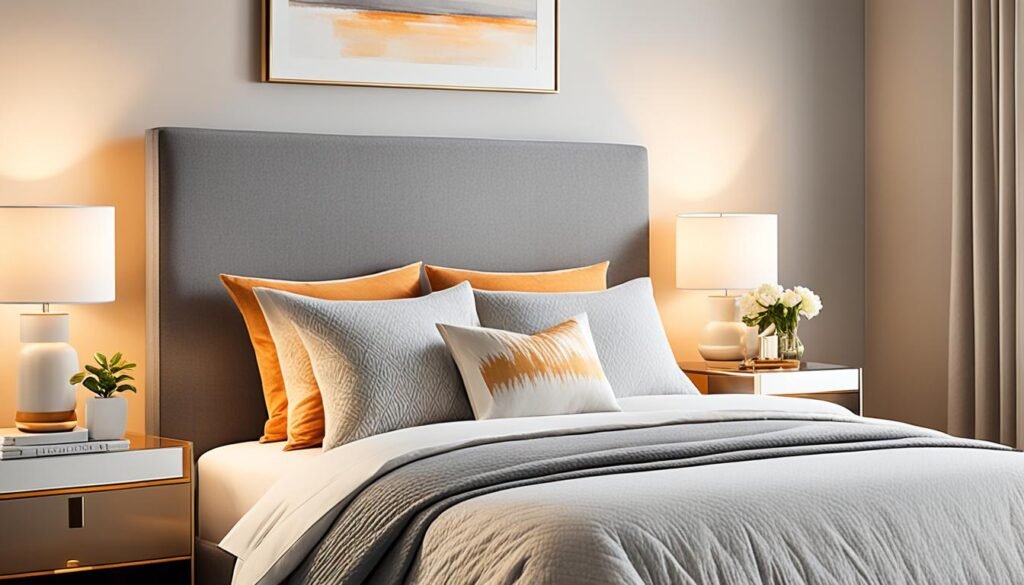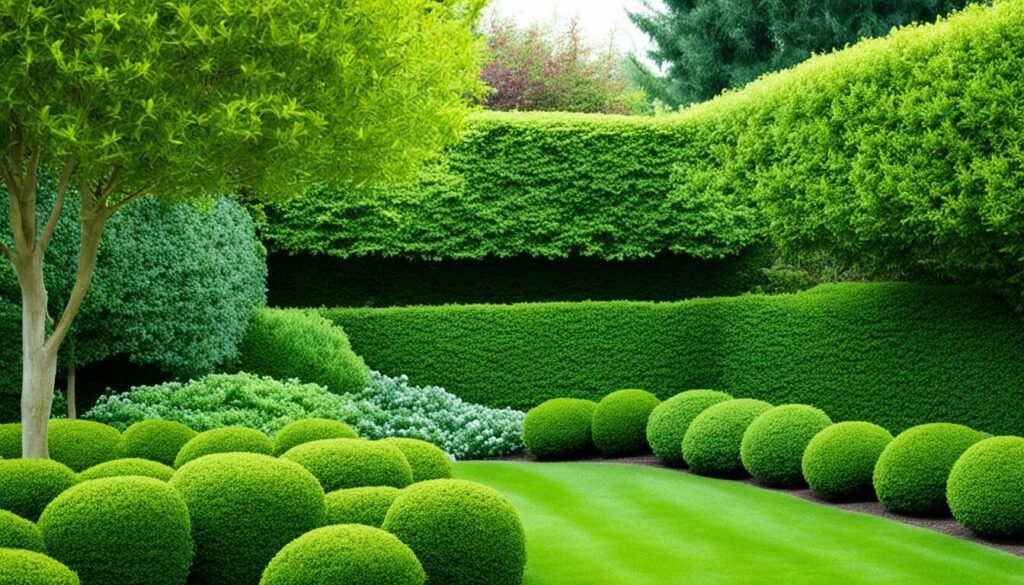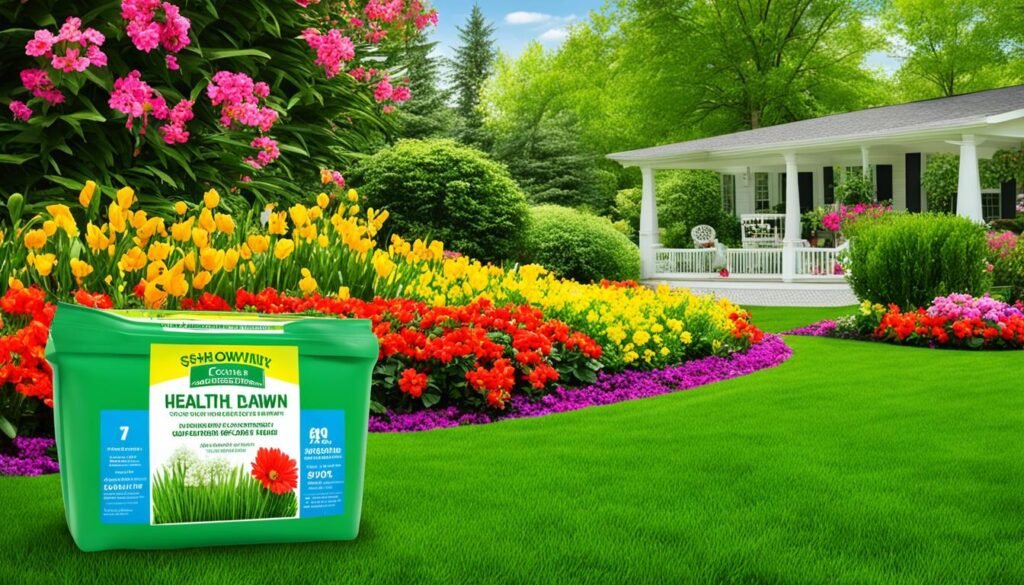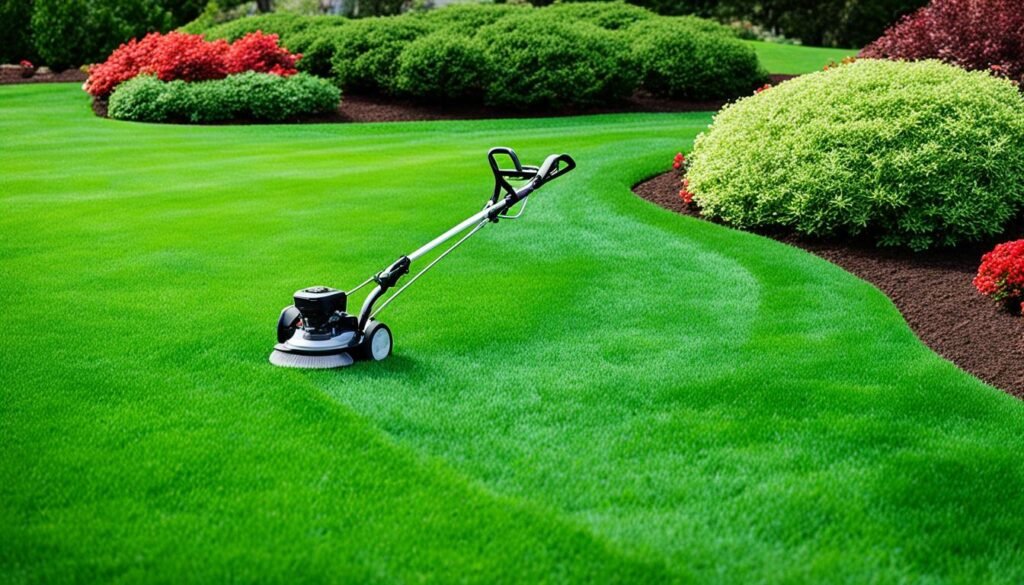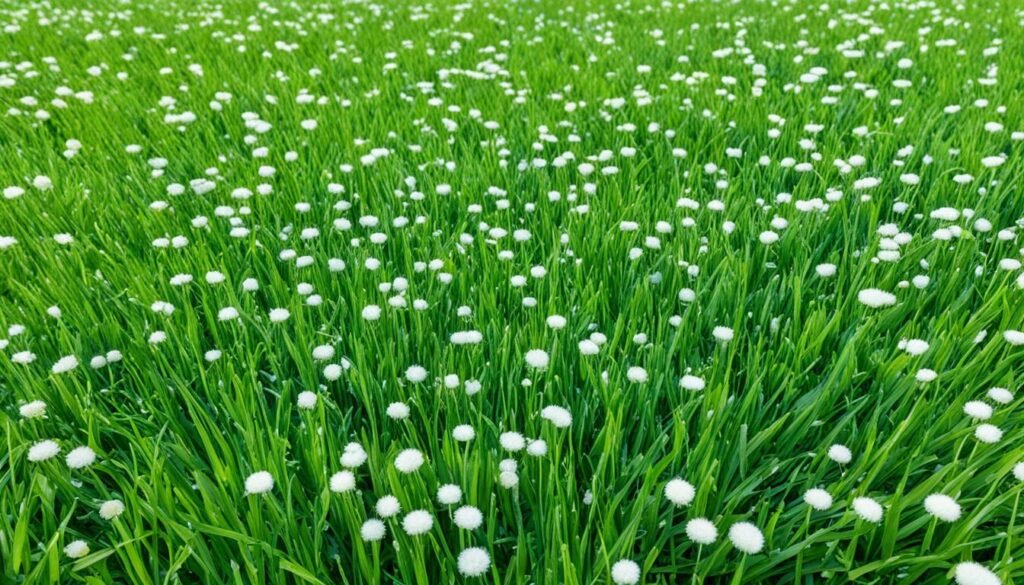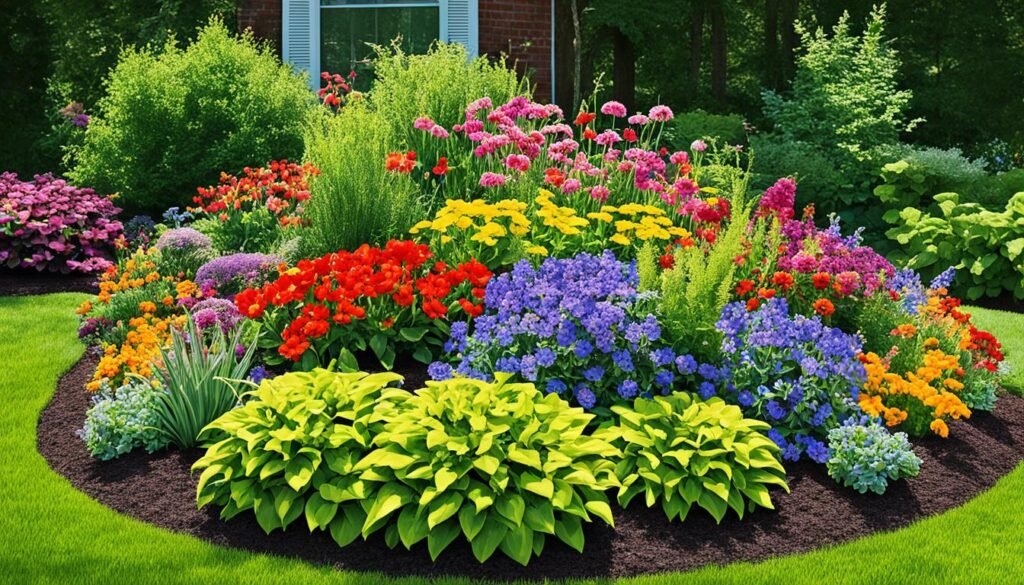Are you looking to enhance the beauty of your front yard? Want to create a welcoming and aesthetically pleasing outdoor space? The right choice of trees can make all the difference!
But with so many options, how do you know which trees are the best for your front yard? Which ones will thrive in your climate and provide the most benefits?
In this article, we’ve researched for you and compiled a list of the top 10 trees for front yard landscaping.
From flowering trees to shade trees, we’ll cover a variety of options that will suit different preferences and needs.
So, whether you’re looking for a burst of color, privacy, or ecological benefits, we’ve got you covered! Let’s dive in and discover the perfect trees for your front yard.
Flowering Dogwood (Cornus Florida)

The Flowering Dogwood, scientifically known as Cornus Florida, is a beloved and versatile option for front yard landscaping, renowned for its captivating four-season interest and adaptability to various climates.
Four-Season Interest:
- Spring Blooms: The Flowering Dogwood dazzles with its exquisite spring blooms, which emerge in delicate shades of white, pink, or red. These beautiful blossoms infuse the front yard with vibrant color and fragrance, heralding the arrival of the spring season in spectacular fashion.
- Summer Canopy: During the summer, the Flowering Dogwood boasts a compact and lush canopy, providing shade and shelter to the surrounding landscape. Its dense foliage creates a verdant backdrop, enhancing the overall beauty and tranquility of the front yard environment.
- Fall Foliage: As autumn unfolds, the Flowering Dogwood transforms with its stunning display of red foliage, adding warmth and richness to the landscape. The vibrant hues of red and burgundy create a striking contrast against the backdrop of the changing seasons, captivating the eye and stirring the senses.
- Winter Berries: Even in the depths of winter, the Flowering Dogwood continues to enchant with its clusters of bright red berries. These colorful fruits add visual interest to the front yard and serve as a valuable food source for birds, attracting wildlife and fostering biodiversity.
Adaptability and Growing Conditions:
- Versatile Climate Tolerance: The Flowering Dogwood exhibits remarkable adaptability and can thrive in various climates, making it well-suited for front yard landscapes across USDA zones 3 to 8. Whether in intense cold or moderate warm regions, this resilient tree flourishes and adds beauty to outdoor spaces.
- Light Requirements: Preferring full sun to partial shade, the Flowering Dogwood thrives in environments that receive ample sunlight while tolerating some shade. Providing the tree with the appropriate light conditions ensures optimal growth and flowering performance, allowing it to showcase its beauty throughout the seasons.
Visual Appeal and Landscape Enhancement:
- Vibrant Color and Beauty: With its stunning spring blooms, rich foliage, and colorful berries, the Flowering Dogwood offers unparalleled visual appeal and beauty in the front yard landscape. Its multi-season interest ensures year-round enjoyment and creates an ever-changing outdoor environment.
- Wildlife Attraction: Beyond its aesthetic attributes, the Flowering Dogwood supports wildlife, particularly birds. The tree’s berries serve as a valuable food source for various bird species, attracting avian visitors and fostering ecological diversity in the frontyard ecosystem.
In summary, the Flowering Dogwood emerges as a versatile and enchanting choice for front yard landscaping, offering a symphony of color, fragrance, and wildlife attraction throughout the year. By incorporating this beloved tree into the landscape design, homeowners can elevate the beauty and biodiversity of their outdoor spaces, creating a welcoming and harmonious environment that delights the senses and nurtures the soul.
Paper Birch (Betula papyrifera)
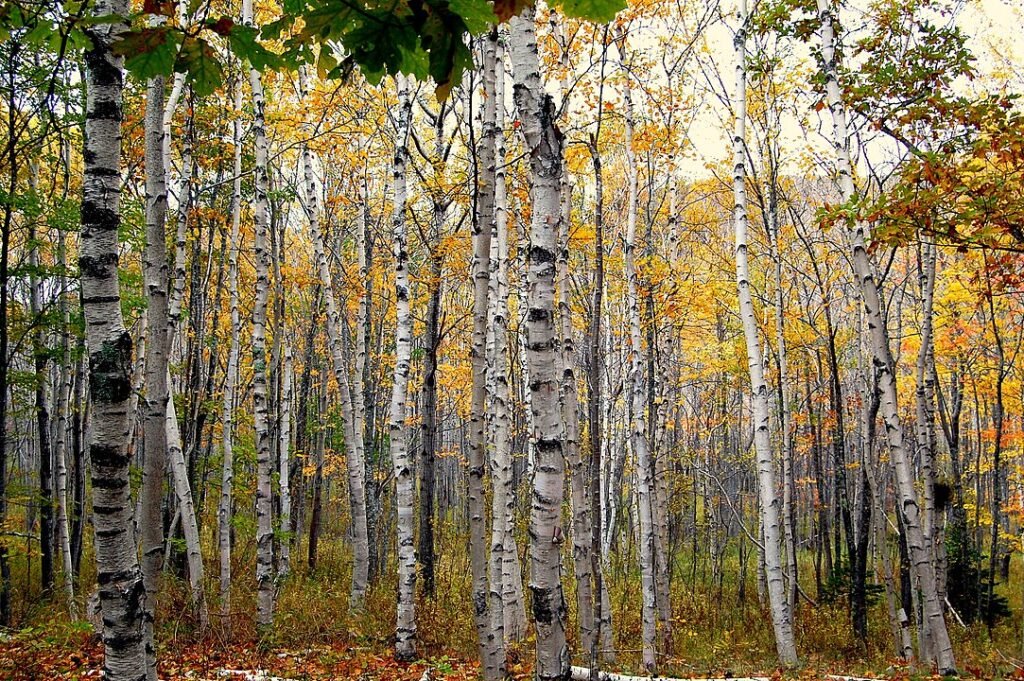
The Paper Birch, scientifically known as Betula papyrifera, is a striking addition to front yard landscaping, offering beauty and height that enhance the visual appeal of outdoor spaces.
Features:
- Distinctive Bark: Renowned for its peeling white bark, the Paper Birch boasts a unique, eye-catching appearance that adds character and charm to the landscape. The stark white bark provides a striking contrast against the green foliage, creating a captivating visual display.
- Autumn Splendor: During autumn, the Paper Birch transforms with stunning yellow leaves, infusing the front yard with a vibrant burst of color. This seasonal spectacle adds warmth and allure to the landscape, creating a picturesque setting for homeowners and visitors alike.
- Graceful Appearance: With its elegant and delicate stature, the Paper Birch exudes an air of elegance, making it an ideal choice for cultivating an inviting and aesthetically pleasing landscape design. Its slender branches and gently swaying leaves impart a sense of tranquility and serenity to the outdoor environment.
Care Requirements:
- Preferred Growing Conditions: Thriving in zones 2 to 7, the Paper Birch flourishes in environments characterized by partial shade and moist soil conditions. Providing the tree with the appropriate growing conditions ensures optimal growth and vitality, allowing it to reach its full majestic potential.
- Fast Growth Rate: With a rapid growth, the Paper Birch can attain impressive heights of up to 70 feet, serving as a majestic focal point in the front yard landscape. Its towering presence adds vertical interest and visual prominence, commanding attention and admiration from onlookers.
Visual Appeal and Landscape Enhancement:
- Unique Visual Appeal: The distinctive white bark of the Paper Birch lends a sense of uniqueness and intrigue to the front yard landscape, serving as a focal point and conversation starter. Its striking appearance adds visual interest and dynamic contrast, elevating the aesthetic appeal of outdoor spaces.
- Seasonal Splendor: During the autumn months, the Paper Birch dazzles with its vibrant display of yellow foliage, infusing the landscape with warmth and vitality. This seasonal transformation enhances the beauty of the front yard, creating a captivating backdrop for outdoor enjoyment and relaxation.
In summary, the Paper Birch emerges as a captivating and enchanting choice for front yard landscaping, offering a harmonious blend of distinctive visual appeal, seasonal splendor, and graceful elegance. By incorporating this majestic tree into the landscape design, homeowners can elevate the ambiance of their outdoor spaces and create a welcoming environment that delights the senses and inspires admiration.
Sugar Maple (Acer saccharum)

The Sugar Maple, also known as Acer saccharum, is a majestic addition to front yard landscaping, offering aesthetic appeal and practical benefits that enhance outdoor living spaces.
Features:
- Ample Shade: With its tall stature and wide, spreading canopy, the Sugar Maple provides generous shade, creating a comfortable and inviting outdoor environment for relaxation and leisure activities.
- Vibrant Fall Foliage: One of the most captivating attributes of the Sugar Maple is its stunning fall foliage, which transitions into a spectacular display of vibrant hues, including yellows, oranges, scarlets, and reds, adding a picturesque charm to the landscape.
- Syrup Production: Renowned for its syrup production, the Sugar Maple yields sap harvested and processed into delicious maple syrup, offering a delightful and natural sweetener option for various culinary delights.
Care Requirements:
- Soil and Climate Preferences: Thriving in moist, well-draining soil, the Sugar Maple flourishes in zones 3 to 8, showcasing adaptability to various climates. While it can tolerate full sun, partial shade supports its growth and development.
- Placement Considerations: Given its tall and stately nature, carefully considering size and placement is essential when incorporating the Sugar Maple into front yard landscaping. Providing ample space for growth, this tree can serve as a focal point or be strategically planted to offer shade to outdoor seating areas.
Functional and Aesthetic Benefits:
- Enhanced Outdoor Experience: By offering ample shade and creating a vibrant display of fall colors, the Sugar Maple contributes to a more enjoyable and visually appealing outdoor living space, fostering relaxation and enjoyment.
- Natural Sweetener: Beyond its ornamental value, the Sugar Maple provides the added benefit of syrup production, allowing homeowners to indulge in the delightfully sweet and flavorful maple syrup for culinary purposes, adding a touch of natural goodness to their dishes.
In summary, the Sugar Maple emerges as a versatile and desirable choice for front yard landscaping, seamlessly combining shade provision, aesthetic beauty, and syrup production to enhance the functionality and appeal of outdoor living spaces. Consider integrating this majestic tree into your front yard to enjoy its multifaceted benefits and elevate the ambiance of your home environment.
Colorado Blue Spruce (Picea pungens)
The Colorado Blue Spruce is a majestic coniferous evergreen tree, renowned for its captivating beauty and distinctive features, making it an exceptional choice for front yard landscaping.
Features:
- Distinctive Foliage: Adorned with silvery-blue needles, the Colorado Blue Spruce boasts foliage that sets it apart, adding a touch of elegance and uniqueness to your outdoor space.
- Striking Shape: With its pyramidal form and potential height reaching 75 feet, this tree serves as a commanding focal point, particularly in larger front yards, exuding a sense of grandeur and sophistication.
- Adaptability: Flourishing in zones 3 through 7, the Colorado Blue Spruce demonstrates resilience across various climates, thriving in full sun conditions, thereby offering versatility and suitability for different front yard landscapes.
Landscaping Benefits:
- Aesthetic Appeal: The distinct color and shape of the Colorado Blue Spruce make it a visually captivating addition to any landscape design, elevating the overall aesthetic and creating a focal point that commands attention.
- Wildlife Attraction: Beyond its ornamental value, this tree attracts birds with its dense branches, providing nesting sites and shelter, thereby fostering a harmonious environment and enriching your front yard with natural beauty and vitality.
- Low Maintenance: With its low-maintenance nature, requiring minimal care beyond full sun exposure, the Colorado Blue Spruce offers convenience and ease of upkeep, allowing you to enjoy its beauty without significant effort.
The Colorado Blue Spruce epitomizes beauty and functionality in front yard landscaping, offering a harmonious blend of visual allure, adaptability, and wildlife appeal. Consider incorporating this majestic tree into your outdoor space to create a landscape that captivates the senses and enhances the ambiance of your home environment.

Whether you use the Colorado Blue Spruce as a standalone tree or as part of a more extensive front yard landscaping, its stunning features will undoubtedly enhance the overall appeal of your home. Choose this remarkable spruce tree as a focal point for your front yard, and enjoy its beauty for years.
Emerald Green Arborvitae (Thuja occidentalis)
The Emerald Green Arborvitae, scientifically known as Thuja occidentalis, stands out as an exceptional choice for front yard landscaping, particularly for those seeking privacy hedges. This fast-growing evergreen tree boasts several features that make it an ideal addition to your outdoor space.
Features:
- Privacy Solution: With its rapid growth and dense foliage, the Emerald Green Arborvitae is an excellent option for creating privacy hedges in your front yard, offering both seclusion and beauty.
- Space Efficiency: This tree typically reaches an average height of 15 to 20 feet and showcases a narrow, columnar shape, making it suitable for smaller front yard spaces where maximizing vertical growth is essential.
- Versatile Hardiness: Thriving in various soil types, including clay, and adaptable to USDA hardiness zones 5 through 9, the Emerald Green Arborvitae proves its versatility and resilience across different regions.
Landscaping Benefits:
- Year-Round Appeal: Adorning your front yard with vibrant, emerald-green foliage throughout the year, this evergreen tree provides a lush and attractive backdrop to your landscaping, ensuring beauty in every season.
- Visual Impact: Whether planted as a focal point or in groups, the slender shape and perpetual greenery of the Emerald Green Arborvitae create a visually striking presence, enhancing the aesthetic appeal of your front yard.
- Customizable Design: With the flexibility to trim and shape according to your preferred landscaping style, formal or informal, this arborvitae tree allows for personalized adjustments to suit your outdoor design preferences.
For a closer look at the Emerald Green Arborvitae and its landscaping potential, refer to the informative video below:
Regarding front yard landscaping, the Emerald Green Arborvitae is an excellent addition to create privacy, add greenery, and enhance the overall appeal of your home. Please use its fast growth rate, hardiness, and slender stature to transform your front yard into a captivating and welcoming outdoor space.
Magnolia (Magnolia dodecapetala)
The Magnolia, scientifically known as Magnolia dodecapetala, is a captivating flowering tree renowned for its beauty and fragrance, making it an exquisite addition to front yard landscaping.
Features:
- Stunning Blooms: The Magnolia is a showstopper, boasting large, fragrant blooms in shades of pink, white, or lavender, adding charm and allure to your outdoor space.
- Size Variation: Growing anywhere from 10 to 30 feet tall, it’s suitable for various front yard sizes, while its low-branching habit adds elegance to the landscape.
Growing Conditions:
- Soil Requirements: Thriving in moist, well-draining, acidic soil, ensure the right conditions for optimal growth and development.
- Sunlight Needs: Plant the Magnolia in an area that receives full sun, allowing it to showcase its blooms to their fullest extent.
Landscaping Benefits:
- Focal Point: The Magnolia is a perfect focal point in any front yard landscaping project, drawing attention with its stunning appearance and delightful fragrance.
The Magnolia’s remarkable blooms and charming fragrance make it an enchanting addition to your front yard, elevating its aesthetic appeal and bringing joy to your outdoor space.
For a visual representation of the Magnolia tree, refer to the image below:
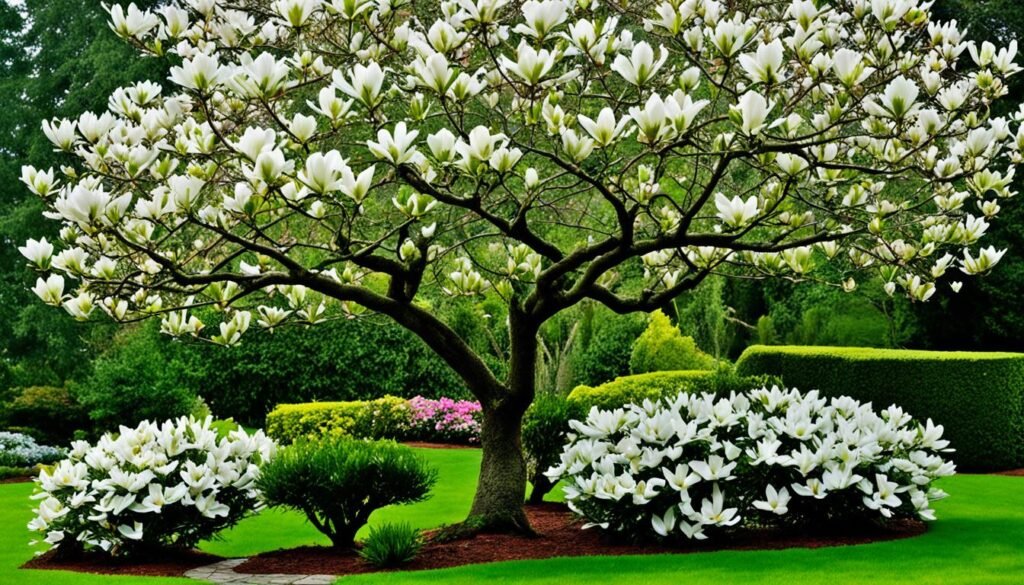
Next, we’ll explore the majestic Red Oak tree and its benefits for front yard landscaping.
Red Oak (Quercus rubra)
The Red Oak, scientifically known as Quercus rubra, is a majestic shade tree renowned for its elegance and beauty, making it an excellent choice for front yard landscaping. Its towering height and impressive rounded canopy, reaching up to 75 feet, is ideal for larger yards.
Features:
- Vibrant Fall Foliage: The Red Oak’s standout feature is its vibrant red fall foliage, creating a stunning display of color in your front yard and complementing seasonal changes.
- Durable and Long-lasting: Known for its deep root system and strong wood, the Red Oak is durable and long-lasting, making it suitable for planting near your house.
- Adaptable to Various Climates: Thriving in zones 3 to 8, the Red Oak adapts well to different climates, providing ample shade and comfort during hot summer days.
Environmental Contribution:
- Air Purification: As an established tree, the Red Oak contributes to air purification by absorbing carbon dioxide, promoting a healthier environment.
- Wildlife Habitat: It provides a habitat for various species, supporting biodiversity and creating a more sustainable ecosystem in your front yard.
Landscaping Tips:
- Strategic Placement: Plan the placement of the Red Oak strategically, ensuring it has enough space to spread its branches and showcase its beauty.
- Complementary Pairings: Pair the Red Oak with smaller shrubs or flowering plants to create a harmonious and balanced landscape design.
The Red Oak is not just a beautiful addition to your front yard; it’s also an environmental asset, enhancing the beauty of your outdoor space while contributing to a healthier ecosystem.

Adding a Red Oak to your front yard landscaping enriches your property’s aesthetic appeal and showcases your commitment to environmental sustainability. Its grandeur, resilience, and ecological benefits make it a timeless choice for homeowners seeking to enhance their outdoor spaces.
Eastern Redbud (Cercis canadensis)
The Eastern Redbud, scientifically known as Cercis canadensis, is a captivating and versatile addition to front yard landscaping projects, celebrated for its stunning pinkish-purple flowers and low-maintenance nature.
Vibrant Spring Bloom:
- Pop of Color: In early spring, the Eastern Redbud bursts into vibrant pinkish-purple flowers, creating a dazzling display that enlivens the outdoor space with color and charm. These delicate blooms are a striking focal point, infusing the front yard landscape with beauty and vitality.
Low-Maintenance Nature:
- Minimal Care Requirements: With its low-maintenance nature, the Eastern Redbud offers homeowners a hassle-free tree option that requires minimal care once established. Its resilience and adaptability make it an ideal choice for individuals seeking a tree that thrives with little intervention, allowing for easy enjoyment and appreciation of its beauty.
Versatility and Landscape Enhancement:
- Mature Size and Form: With a mature height of up to 30 feet and a spread almost as wide, the Eastern Redbud possesses a graceful and expansive form that provides an impressive focal point in the front yard landscape. Its spreading canopy offers shade and shelter while adding depth and dimension to the outdoor environment.
- Flexible Planting Options: The Eastern Redbud’s versatility extends to its planting options, allowing homeowners to incorporate it as a solitary specimen or as part of a group planting arrangement. Whether showcased as a standalone centerpiece or integrated into a naturalized garden setting, this tree effortlessly enhances the aesthetic appeal of the front yard landscape.
Climate Adaptability:
- Wide Range of Hardiness: Thriving in zones 4 through 9, the Eastern Redbud exhibits exceptional adaptability to various climates across the United States. From regions of cooler temperatures to areas of moderate warmth, this resilient tree flourishes and contributes its beauty to front yard landscapes nationwide.
Eastern Redbud emerges as a stunning and low-maintenance choice for front yard landscaping, offering vibrant spring blooms and versatile planting options. With its graceful form, adaptable nature, and wide range of hardiness, this tree adds both aesthetic appeal and practical value to outdoor spaces, enriching the landscape with its beauty and charm throughout the seasons.
Take a moment to admire the breathtaking Eastern Redbud tree:
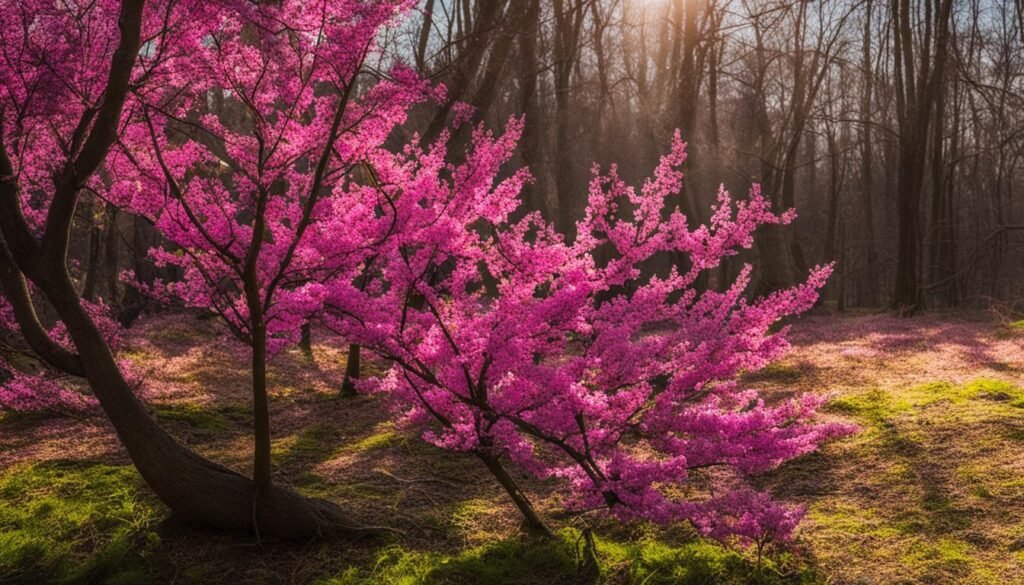
Conclusion
Choosing the right trees for your front yard is a significant decision that can greatly enhance the beauty and value of your property. You can create a visually appealing and inviting outdoor space by carefully considering factors such as growth habits, climate suitability, and maintenance requirements.
When selecting trees for your front yard, it’s essential to consider their ultimate size and shape and how they will complement the existing landscape. Consider the available space and whether you desire shade, privacy, or ornamental value. Research the specific needs of each tree variety to ensure they thrive in your local climate conditions.
Once you’ve chosen the ideal trees for your front yard landscaping, proper care is crucial for their long-term health and vitality. Regular watering, pruning, and fertilizing are essential to promote healthy growth. Applying mulch around the base of the trees can help retain moisture and suppress weed growth. Additionally, monitor for signs of pests or diseases and take prompt action to address any issues.
You can transform your front yard into a stunning outdoor oasis with the right trees and proper care. Whether aiming to create a peaceful retreat or make a bold design statement, carefully selecting front yard trees can make a significant difference. Enjoy the beauty and benefits these trees bring to your property for years.
FAQ
What are the best trees for front yard landscaping?
The top 10 best trees for front yard landscaping are Flowering Dogwood, Paper Birch, Sugar Maple, Colorado Blue Spruce, Emerald Green Arborvitae, Magnolia, Red Oak, and Eastern Redbud.
Why is the Flowering Dogwood a popular choice for front yard landscaping?
The Flowering Dogwood is popular for its four-season interest, including spring blooms, compact summer canopy, red fall foliage, and winter berries. It grows best in USDA zones 3 to 8 and prefers full sun to partial shade.
What are the characteristics of the Paper Birch?
The Paper Birch is known for its striking white peeling bark and yellow autumn leaves. It grows best in zones 2 to 7 and prefers partial shade and moist soil. This fast-growing tree reaches up to 70 feet tall and adds height to the front yard landscape.
What makes the Sugar Maple a good choice for front yard landscaping?
The Sugar Maple is a tall, stately tree that provides ample shade with its wide, spreading canopy. It is famous for its syrup production and stunning fall foliage in shades of yellow, orange, scarlet, and red. This shade and ornamental tree prefers moist, well-draining soil and grows best in zones 3 through 8.
What are the characteristics of the Colorado Blue Spruce?
The Colorado Blue Spruce is a coniferous evergreen tree known for its silvery blue foliage and pyramidal shape. It reaches heights of up to 75 feet and thrives in zones 3 through 7. This low-maintenance tree prefers full sun and attracts birds, making it a stunning addition to spacious front yards.
Why is the Emerald Green Arborvitae a popular choice for front yard landscaping?
The Emerald Green Arborvitae is a fast-growing evergreen tree that forms a privacy hedge in the front yard. It grows 15 to 20 feet tall and exhibits a narrow, columnar shape. This hardy tree tolerates most soils, including clay, and thrives in zones 5 through 9.
What are the characteristics of the Magnolia?
The Magnolia is a flowering tree known for its large, fragrant blooms in pink, white, or lavender. It grows 10 to 30 feet tall and prefers moist, well-draining acidic soil and full sun. The Magnolia is a low-branching tree that adds beauty and fragrance to the front yard.
What makes the Red Oak a good choice for front yard landscaping?
The Red Oak is a shade tree that can reach heights of up to 75 feet with a rounded canopy. It grows in zones 3 to 8 and provides ample shade to larger yards. This stately tree has red fall foliage and can be planted close to the house, as it has a deep root system and strong wood.
What are the characteristics of the Eastern Redbud?
The Eastern Redbud is a small deciduous tree that produces pinkish-purple flowers in early spring. It grows up to 30 feet tall and has a spread almost as wide. This low-maintenance tree is hardy in zones 4 through 9 and can be planted as a solitary specimen or as part of a small grouping in a naturalized garden.
How can I choose the right trees for my front yard?
When selecting trees for your front yard, consider factors such as growth habit, climate suitability, and maintenance requirements. The best trees for front yard landscaping can enhance the beauty and value of your home when properly cared for and selected.
Author
-

Anne Williams is a passionate wordsmith, blending creativity with expertise in SEO to craft captivating content. With a penchant for concise yet compelling prose, she brings stories to life and leaves readers craving more. When she's not penning her next masterpiece, you can find her exploring new coffee shops or lost in the pages of a good book.
View all posts

